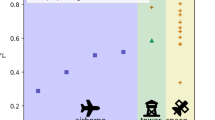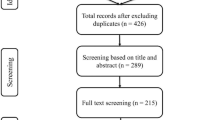Abstract
Remote sensing is used as the indispensable technology in alpine grassland degradation assessment especially at regional scale on the Tibetan Plateau. However, the lack of field spectral data, as the foundation of remote sensing, due to the formidable natural and climate conditions hinders the understanding of spectral characteristics of alpine grassland and their degradation assessment. In this study, spectral characteristics of alpine grasslands and their changes responding to degradation were explored. The results showed that the main spectral characteristics for discriminating the dominant species of alpine meadow (Kobresia littledalei and Kobresia pygmaea), alpine steppe (Stipa purpurea) and desert (Potentilla fruticosa) are spectral features of chlorophyll, cellulose and water which are related to their growth form, plant inclination and residue of withered leaf sheaths. The spectral curves of alpine meadow have a much smaller variety over the whole spectral region compared to those of alpine steppe and desert which generally have weaker chlorophyll and water absorption features and more noticeable non-vegetation features. Different grassland degradation processes exhibit different patterns of spectral characteristics change due to the species composition, vegetation succession, vegetation coverage and soil background. Grassland degradation can happen without obvious vegetation coverage reduction or even with an increment of NDVI (normalized difference vegetation index). Therefore, the assessment of grassland degradation cannot be fulfilled well using single vegetation index or spectral feature. The combination of several vegetation indices or hyperspectral remote sensing along with the priori knowledge is needed in order to perform the assessment more accurately in further studies.






Similar content being viewed by others
References
Akiyama T, Kawamura K (2007) Grassland degradation in China: methods of monitoring, management and restoration. Grassl Sci 53:1–17
Alados CL, Aich AE, Komac B et al (2007) Self-organized spatial patterns of vegetation in alpine grasslands. Ecol Model 201(2):233–242
Cui X, Graf HF (2009) Recent land cover changes on the Tibetan Plateau: a review. Clim Change 94(1–2):47–61
Duan AM, Wu GX (2005) Role of the Tibetan Plateau thermal forcing in the summer climate patterns over subtropical Asia. Clim Dynam 24(7–8):793–807
Elvidge CD (1990) Visible and near infrared reflectance characteristics of dry plant material. Int J Remote Sens 11:1775–1795
Feng S, Tang MC, Wang DM (1998) New evidence for the Qinghai-Xizang (Tibet) Plateau as a pilotregion of climatic fluctuation in China. Chinese Sci Bull 43(6):633–636
Foggin JM (2008) Depopulating the Tibetan grasslands: national policies and erspectives for the future of Tibetan herders in Qinghai Province China. Mt Res Dev 28(1):26–31
Gao BC (1996) NDWI—a normalized difference water index for remote sensing of vegetation liquid water from space. Remote Sens Environ 58(3):257–266
Gao QZ, Wan YF et al (2010) Alpine grassland degradation index and its resonse to recent climate variability in northern Tibet China. Quatern Int 226(1):143–150
Gao Y, Huang J et al (2012) Spatial pattern of non-stationarity and scale-dependent relationships between NDVI and climatic factors- a case study in qinghai-Tibet plateau, China. Ecol Indic 20:170–176
Harris RB (2010) Rangeland degradation on the Qinghai-Tibetan plateau: a review of the evidenceof its magnitude and causes. J Arid Environ 74(1):1–12
Holzner W, Kreichbaum M (2001) Pastures in south and central Tibet (China): probable causes of pasture degradation. Die Bodenkultur 52(1):37–44
Huete AR (1988) A soil-adjusted vegetation index (SAVI). Remote Sens Environ 25(3):295–309
Huete AR, Didan K, Miura T, Rodriguez E (2002) Overview of the radiometric and biophysical performance of the MODIS vegetation indices. Remote Sens Environ 83(1):195–213
Kang SC, Xu YW, You QL (2010) Review of climate and cryospheric change in the Tibetan Plateau. Environ Res Lett 5(1):015101
Lehnert LW, Meyer H, Meyer N, Reudenbach C, Bendix J (2014) A hyperspectral indicator system for rangeland degradation on the Tibetan Plateau: a case study towards spaceborne monitoring. Ecol Indic 39:54–64
Li HX, Liu SZ (2003) A model of grassland degradation assessment based on NDVI-taking the grassland in Tibet as an example. J Mt Sci Engl 21:69–71
Li HX, Liu SZ (2007) Research on grassland degradation assessment model based on ETM + Image—a case study in Naqu County of Tibet. J Desert Res 27(3):412–418 (in Chinese)
Li YE, Wan YF, Lin ED et al (2006a) Grassland degradation in Northern Tibet based on remote sensing data. J Geogr Sc 16(2):165–173
Li YN, Zhao L, Wang QX et al (2006b) Estimation of biomass and annual turnover quantities of Potentilla Froticosa shrub. Acta Agrestia Sin 14(1):72–78 (in Chinese)
Liu B, Shen WS, Lin NF, Li R, Yue YM (2014) Deriving vegetation fraction information for the alpine grassland on the Tibetan plateau using in situ spectral data. J Appl Remote Sens 8:083635
Miehe G, Miehe S, Kaiser K et al (2008) Status and dynamics of the Kobresia pygmaea ecosystem on the Tibetan Plateau. Ambio 37(4):272–279
Miehe G, Miehe S, Bach K et al (2011) Plant communities of central Tibetan pastures in the Alpine Steppe Kobresia pygmaea ecotone. J Arid Environ 75(8):711–723
Nagler PL, Inoue Y, Glenn EP et al (2003) Cellulose absorption index (CAI) to quantify mixed soil–plant litter scenes. Remote Sens Environ 87(2):310–325
Penuelas Filella I (1998) Visible and near-infrared reflectance techniques for diagnosing plant physiological status. Trends Plant Sci 3(4):151–156
Peñuelas J, Pinol J, Ogaya R et al (1997) Estimation of plant water concentration by the reflectance water index WI (R900/R970). Int J Remote Sens 18(13):2869–2875
Pickup G, Bastin GN, Chewings VH (1994) Remote-sensing-based conditionassessment for nonequilibrium rangelands under large-scale commercial graz-ing. Ecol Appl 4:497–517
Qiu J (2008) The third pole. Nature 454(7203):393–396
Robert DA, Smith MO, Adams JB (1993) Green vegetation, non-photosynthetic vegetation, and soil in AVIRIS data. Remote Sens Environ 44:255–269
Tong QX, Zhang B, Zheng LF (2008) Hyperspectral remote sensing. Higher Education Press, Beijing (in Chinese) pp 5–30
Wang YB, Wang GX, Sheng YP, Wang WL (2005) Degradation of the ecoenvironmental system in alpine meadow on the Tibetan plateau. J Glaciol Geocryol 27(5): 634–640
Wang GX, Li YS, Wang YB (2008a) Effects of permafrost thawing on vegetation and soil carbon pool losses on the Qinghai-Tibet Plateau China. Geoderma 143(1):143–152
Wang H, Zhou XL, Wan CG et al (2008b) Eco-environmental degradation in the northeastern margin of the Qinghai-Tibetan Plateau and comprehensive ecological protection planning. Environ Geol 55(5):1135–1147
Wang GX, Li YS, Wang YB et al (2010a) Land surface processes and environmental changes in river headwater regions of Qinghai-Tibet Plateau. Science Press, Beijing, pp 80–110
Wang HJ, Fan WJ, Cui YK, Zhou L, Yan BY et al (2010b) Hyperspectral remote sensing monitoring of grassland degradation. Spectrosc Spect Anal 30(10):2734–2738
Weber VS, Araus JL, Cairns JE, Sanchez C et al (2012) Prediction of grain yield using reflectance spectra of canopy and leaves in maize plants grown under different water regimes. Field Crop Res 128:82–90
Yan ZL, Wu N et al (2005) A review of rangeland privatization and implications in the Tibetan Plateau China. Nomadic Peoples 9(1):31–51
Yanai MH, Li CF, Song ZS (1992) Seasonal heating of the Tibetan Plateau and its effects on the evolution of the Asian summer Monsoon. J Meteorol Soc Jpn 70(1B):319–351
Ye QH, Zhu LP, Zheng HP et al (2007) Glacier and lake variations in the Yamzhog Yumco basin, southern Tibetan Plateau, from 1980 to 2000 using remote-sensing and GIS technologies. J Glaciol 53(183):673–676
You QL, Fraedrich K, Min JZ et al (2014) Observed surface wind speed in the Tibetan Plateau since 1980 and its physical causes. Int J Climatol 34:1873–1882
Yue PP, Lu XF, Ye RR et al (2008) Community characteristics of stipa purpurea steppe in source regions of Changjiang and Huanghe rivers China. J Plant Ecol 32(5):1116–1125 (in Chinese)
Zhang JH, Yao FM, Zheng LY, Yang LM (2007) Evaluation of grassland dynamics in the northern-Tibet Plateau of China using remote sensing and climate data. Sensors 7(12):3312–3328
Zhao HJ (2010) Community characteristics of stipa purpurea alpine steppe. Heilongjiang Animal Sci and Veterin Medic 6:95–99 (in Chinese)
Acknowledgments
This study was financially supported by the National Science Foundation of China (Nos. 41201456 and 41301611). We thank the anonymous reviewers and editor for their constructive comments and suggestions on our manuscript. Their comments help greatly to improve the quality of this paper.
Author information
Authors and Affiliations
Corresponding author
Rights and permissions
About this article
Cite this article
Liu, B., You, G., Li, R. et al. Spectral characteristics of alpine grassland and their changes responding to grassland degradation on the Tibetan Plateau. Environ Earth Sci 74, 2115–2123 (2015). https://doi.org/10.1007/s12665-015-4196-y
Received:
Accepted:
Published:
Issue Date:
DOI: https://doi.org/10.1007/s12665-015-4196-y




